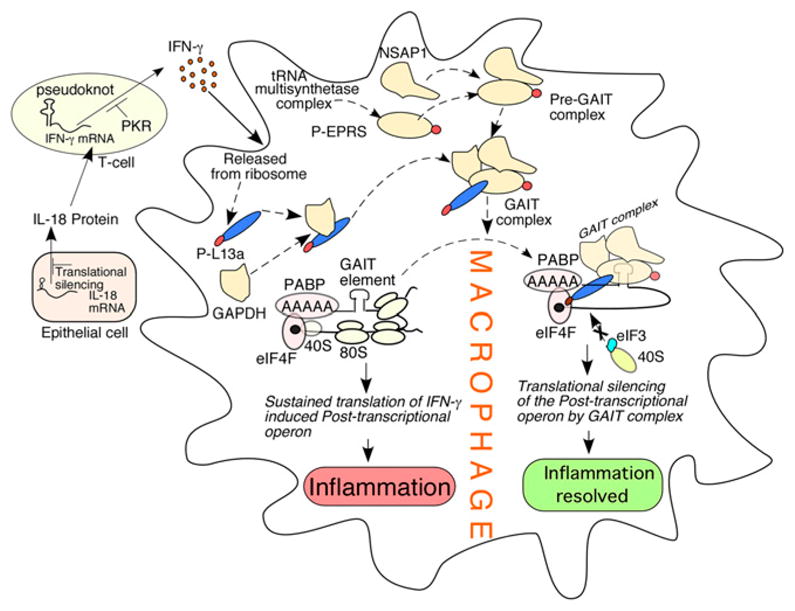FIGURE 4.

Control of the IFN-γ axis and the GAIT paradigm of translational silencing. IL-18, an epithelial cell-derived factor, induces IFN-γ in T cells. The synthesis of both IL-18 and IFN-γ is under translational control by sequence elements at the 5′ UTR of their cognate mRNAs (left). In myeloid cells (such as macrophages), IFN-γ induces the initial inflammatory signal that is eventually silenced by an ordered assembly of the GAIT complex (subunits in yellow). Formation of GAIT complex requires the release of its subunit proteins from their parental complex triggered by phosphorylation events (phosphate groups in red). The binding of silencing-competent GAIT complex at the GAIT elements of the 3′ UTRs of the mRNAs (the members of the posttranscriptional operon) encoding inflammatory proteins directly blocks translation by intercepting the recruitment of 40S ribosomal subunit. Translational silencing of a group of inflammatory proteins by the GAIT pathway resolves inflammation.
